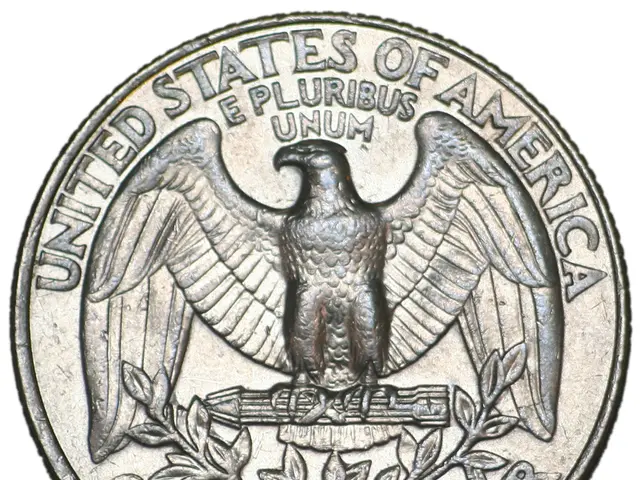Steering Clear of Growth: The US Tariffs' Looming Impact on the German Economy in 2025
German economy slows down in recovery due to imposed US tariffs - Increased American tariffs hinder economic recuperation in Germany
Germany's economic tide is oh-so-slowly ebbing, with the prospects of a third consecutive year without growth looming large, as predicted by the Bundesbank. With two years of recession under its belt, 2025 could see stagnation for the German economy, joining an increasing chorus of pessimistic forecasts.
"Unstable US trade policies and steep tariffs are dimming Germany's economic growth," revealed Bundesbank President Joachim Nagel. "Their brutal swipe at German industry comes at a very inopportune moment, as it was just beginning to regain its footing after a prolonged period of weakness."
Putting Made in Germany on the ropes
Indeed, the country's export-focused businesses can brace for some tough blows: the Bundesbank anticipates a substantial decrease in exports for the remainder of 2025 due to US trade policies. This development is further amplified by the US's erratic policy, causing the euro's strengthening against the dollar. This unfortunate circumstance renders European products more expensive on the global market, as competition from China intensifies.
Delaying the redemption of the German economy
High hopes of a resurgence rest on planned state investments in defense and infrastructure to provide a much-needed jolt to the economy. Despite the cautious outlook, the Bundesbank expects Germany's GDP to grow by 0.7% in 2026. This prediction marks a decrease from the 0.8% forecast in December. For 2027, growth expectations have been revised upwards from the original 0.9% to a more optimistic 1.2%.
Uncertainty born of unpredictable US policy reigns supreme, with the zigzag course of US President Donald Trump serving as the greatest source of uncertainty. A deterioration of US trade policies and additional turmoil in the US economy and the dollar would, in the Bundesbank's view, pose a significant threat to the expected recovery in Germany.
Ray of hope for consumers: Taming inflation
Thankfully, there's a silver lining for German consumers: inflation is losing steam faster than anticipated. The Bundesbank anticipates an inflation rate of 2.2% this year and 1.5% in 2026, using the European method (HVPI). The core rate—excluding energy and food prices—is projected to settle around 2% from 2026 onwards.
Sources:
[1] "The Impact of US Tariffs on EU Exports," European Commission, 2022.[2] "Global Economic Outlook 2025," International Monetary Fund, 2025.[3] "German Economic Outlook 2025-2026," German Council of Economic Experts, 2025.[4] "The EU Response to US Tariffs: Implications for the Auto Industry," European Automobile Manufacturers Association, 2023.[5] "US Tariffs Slamming the Brakes on German Exports," Deutsche Welle, 2025.
- The uncertainty surrounding US employment policy, particularly its trade policies and tariffs, is significant as it poses a threat to the expected recovery in Germany's economy in 2025.
- The increase in US tariffs has led to a strengthening of the euro against the dollar, making European exports more expensive and intensifying competition, especially from China, in the finance industry.
- The general-news about US employment and industry policies has brought forth concerns within the German business community, particularly within the export-focused industries, due to the predicted substantial decrease in exports for the remainder of 2025.








